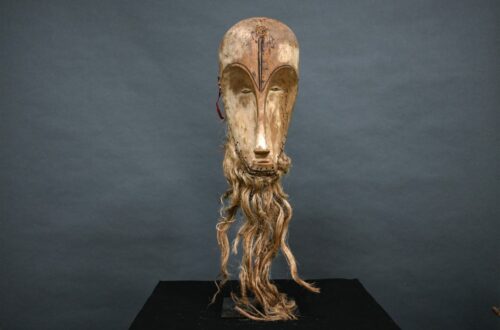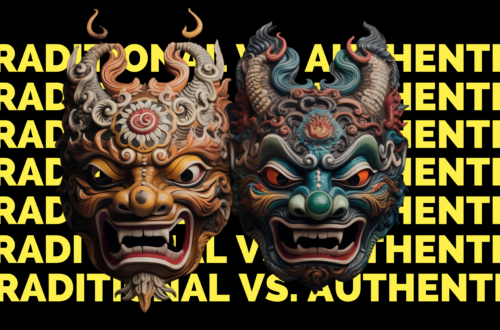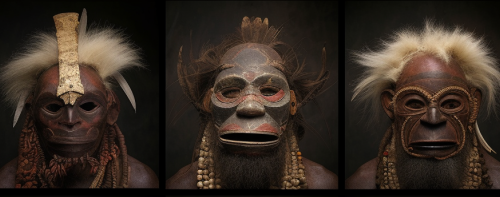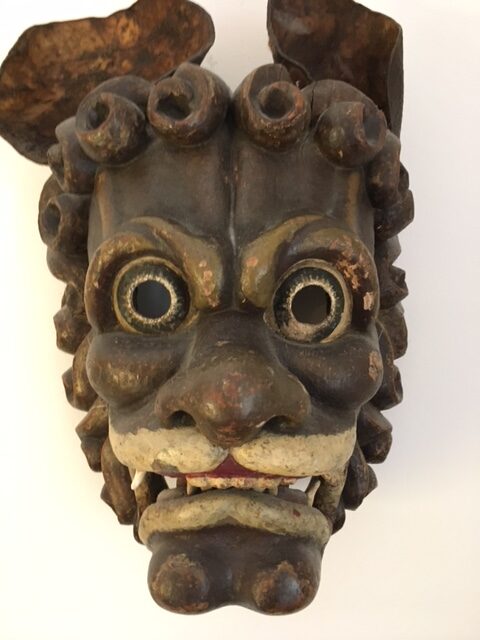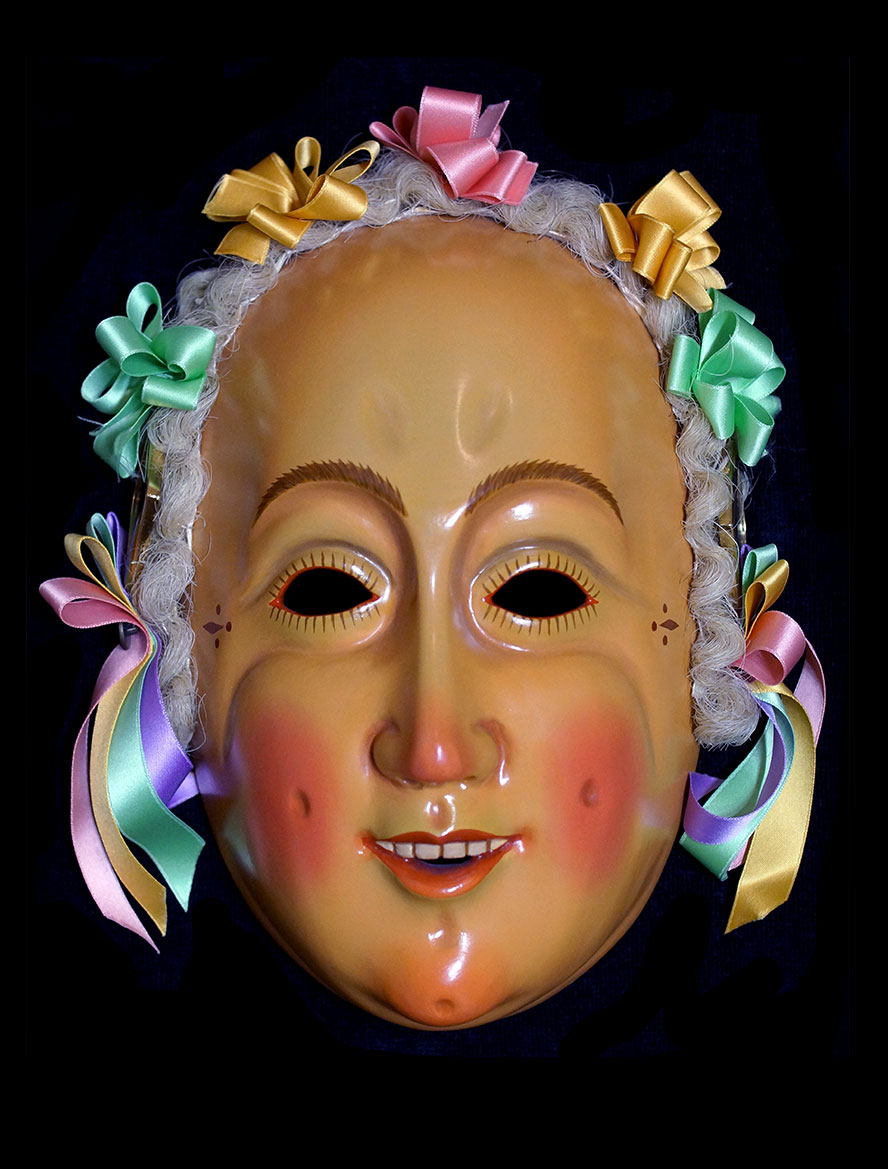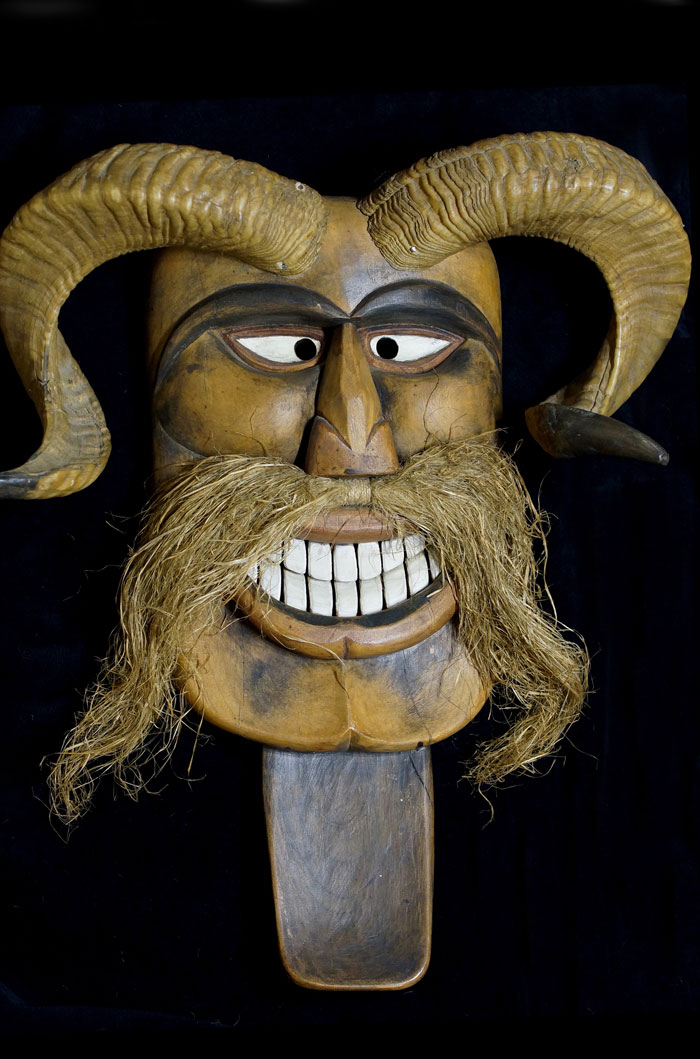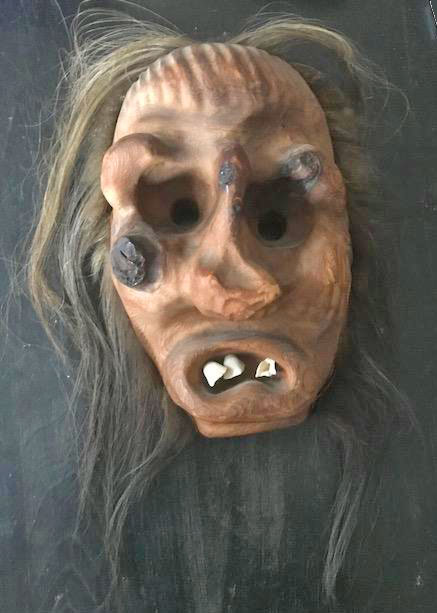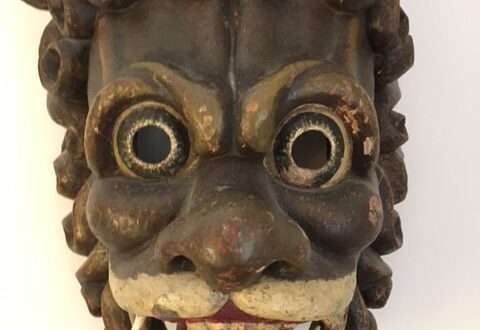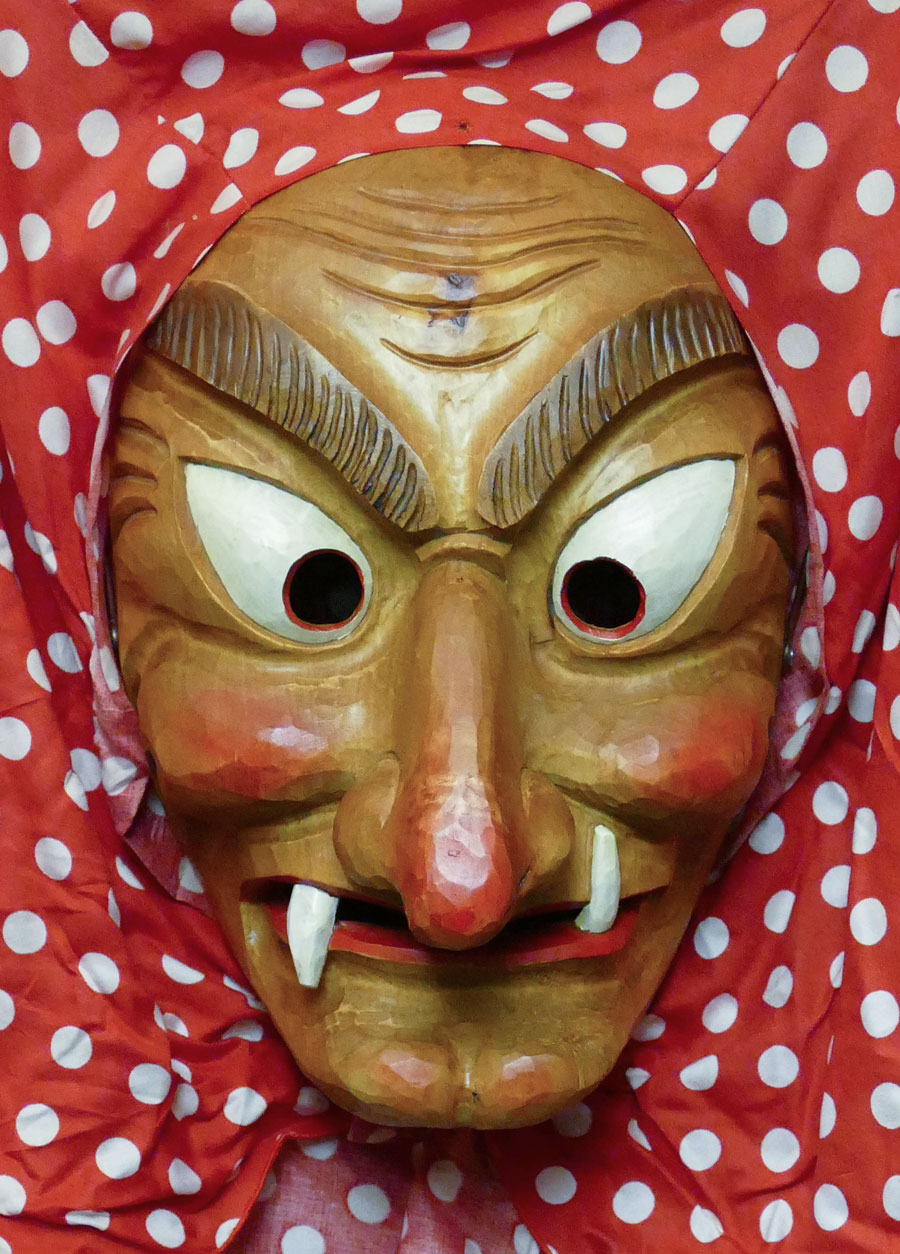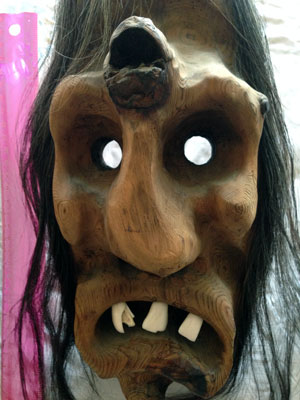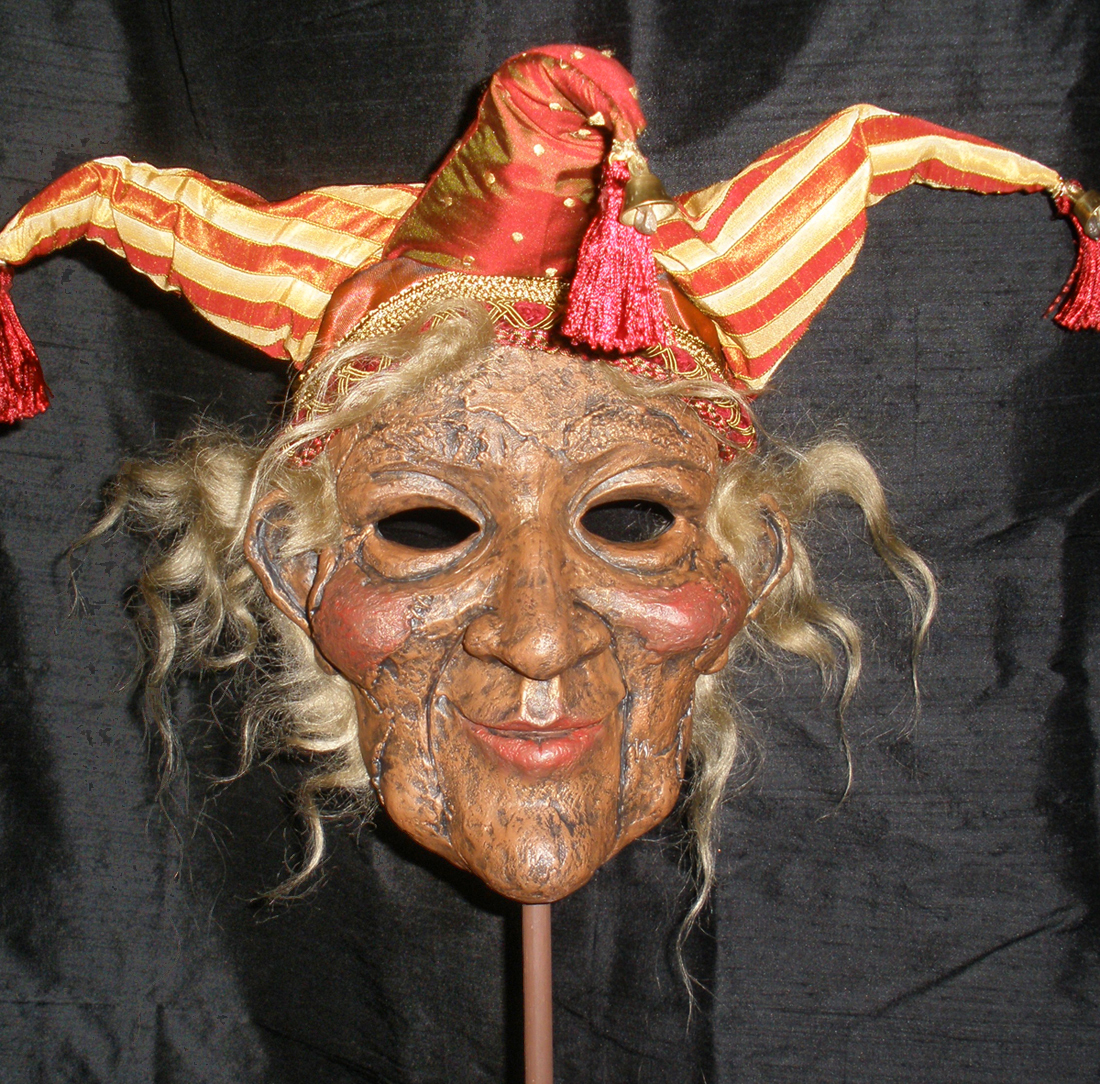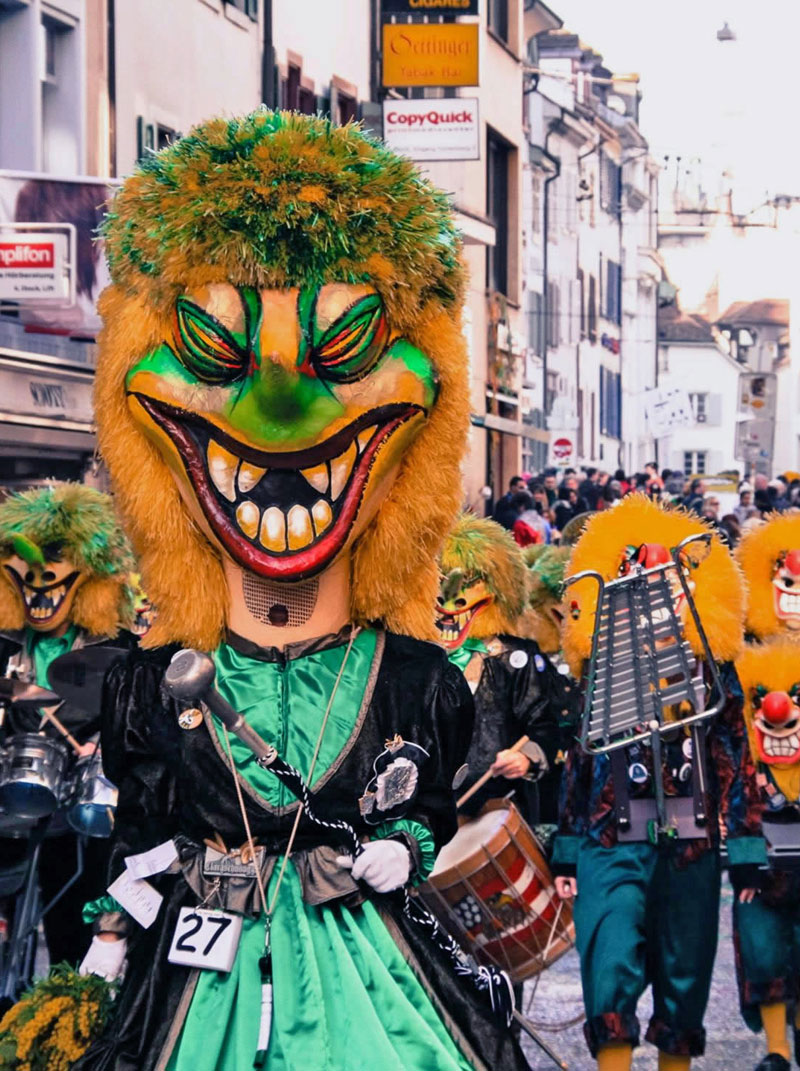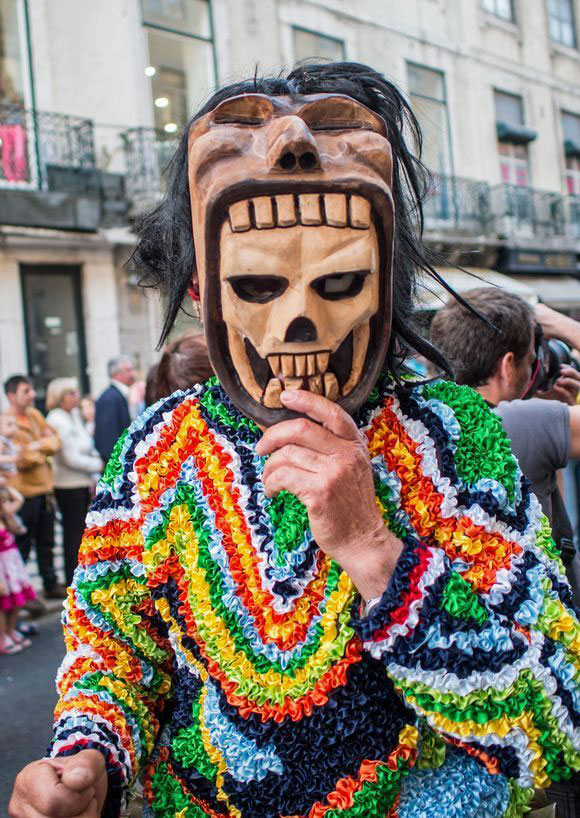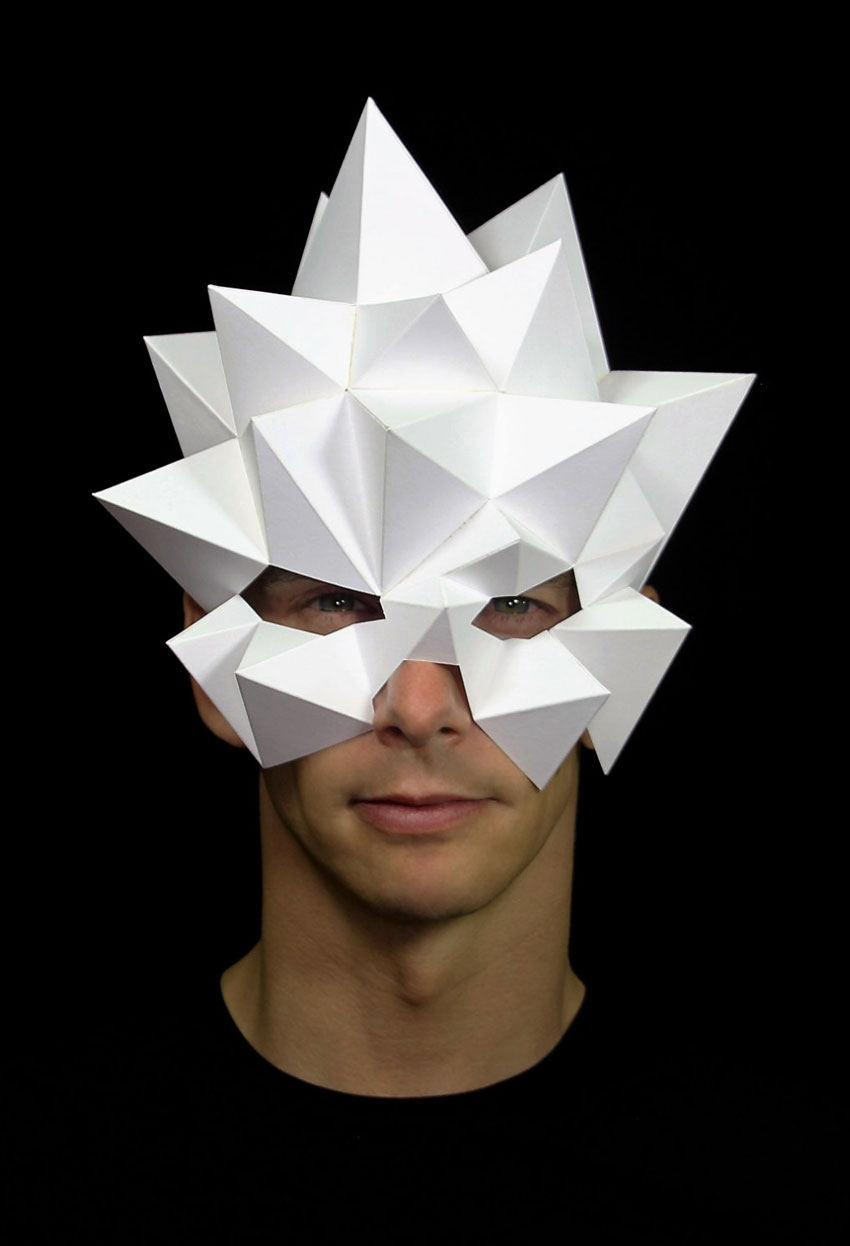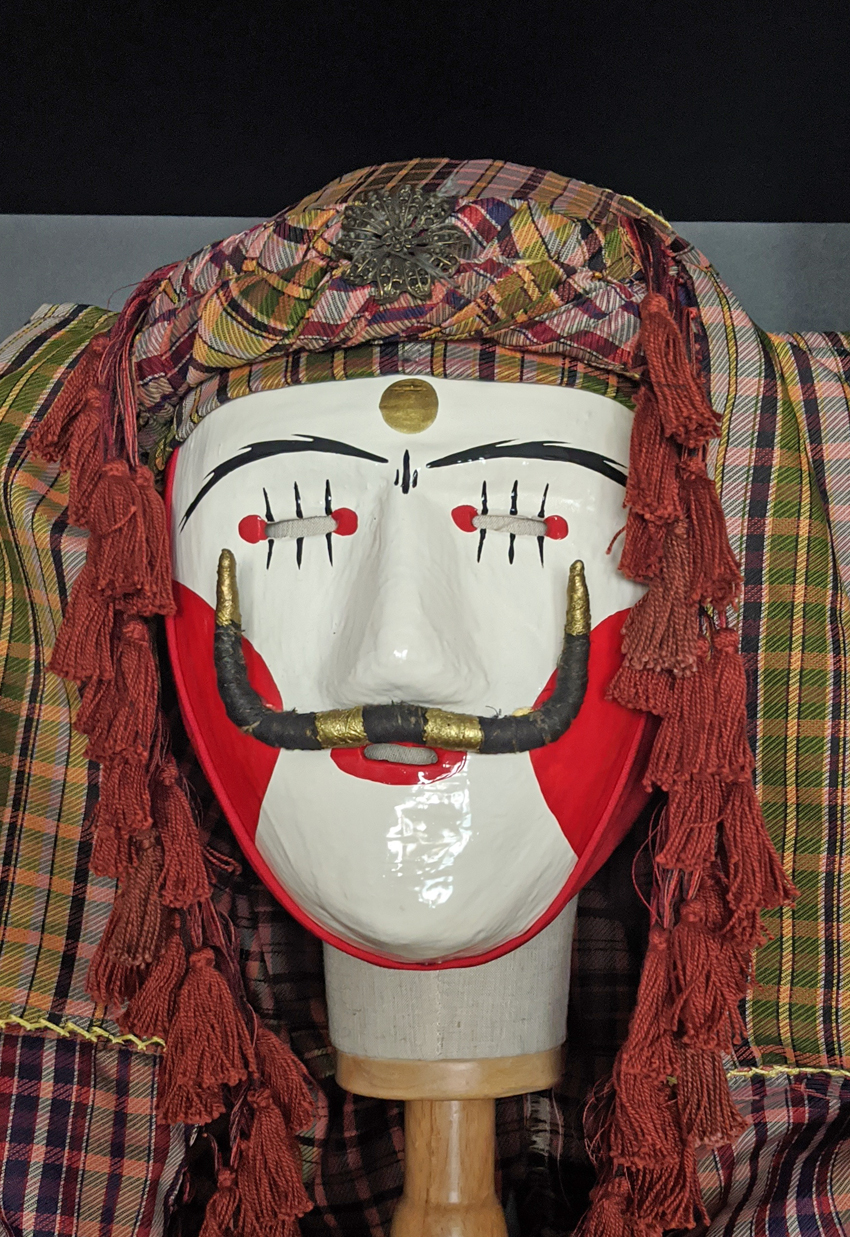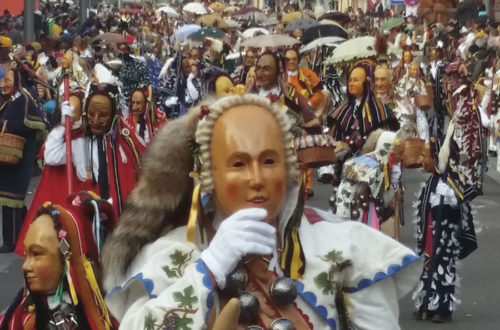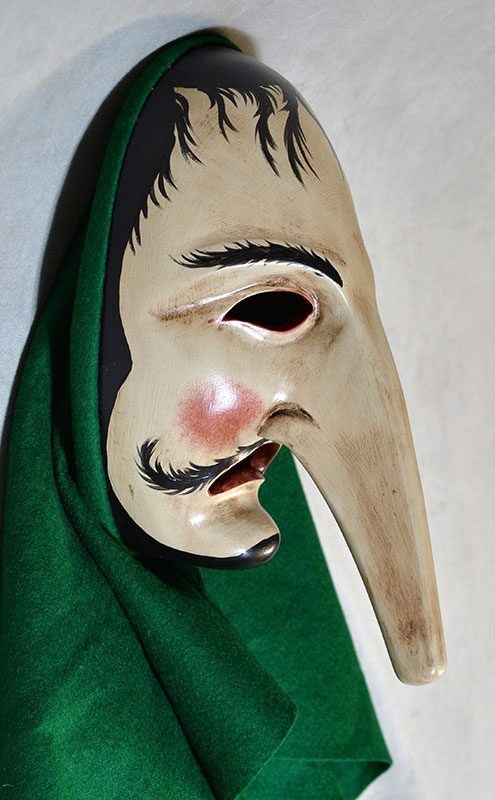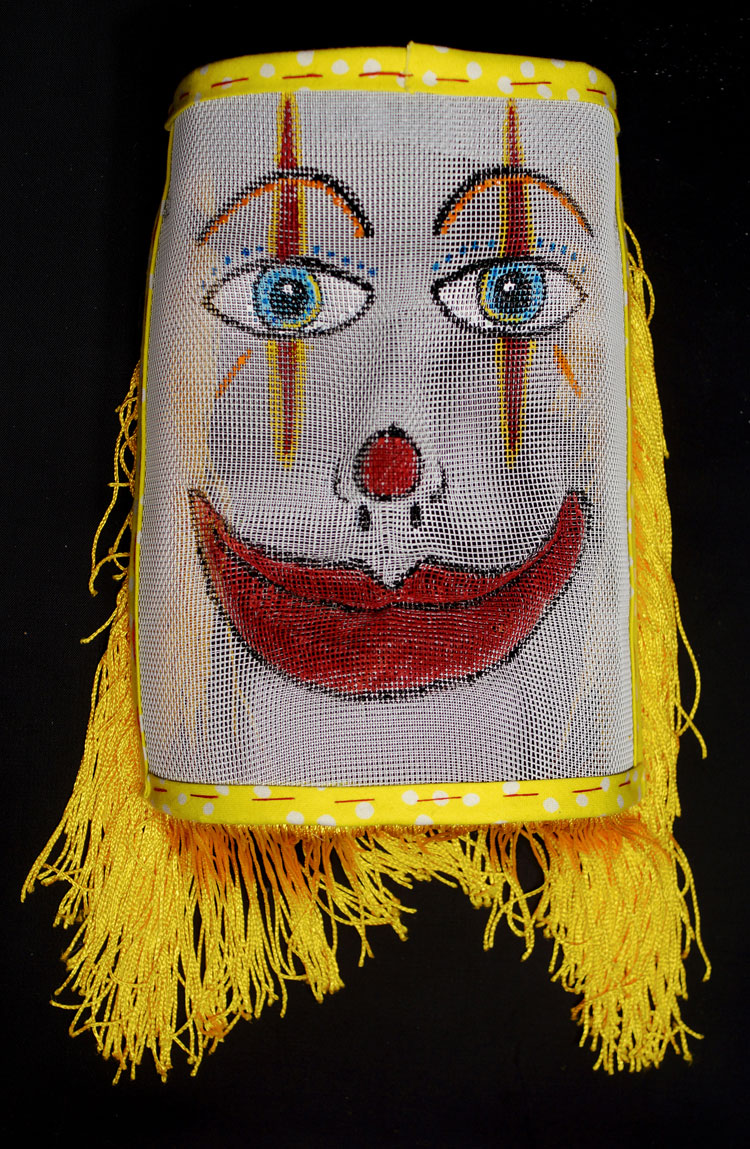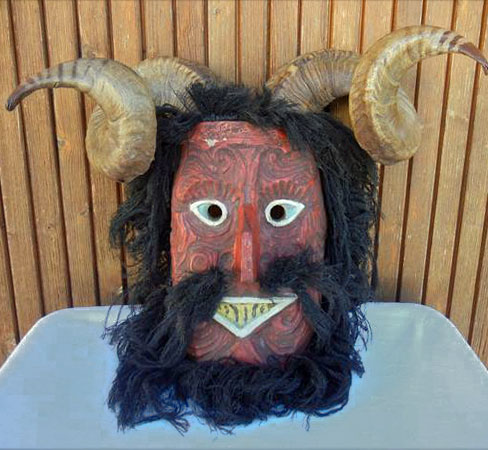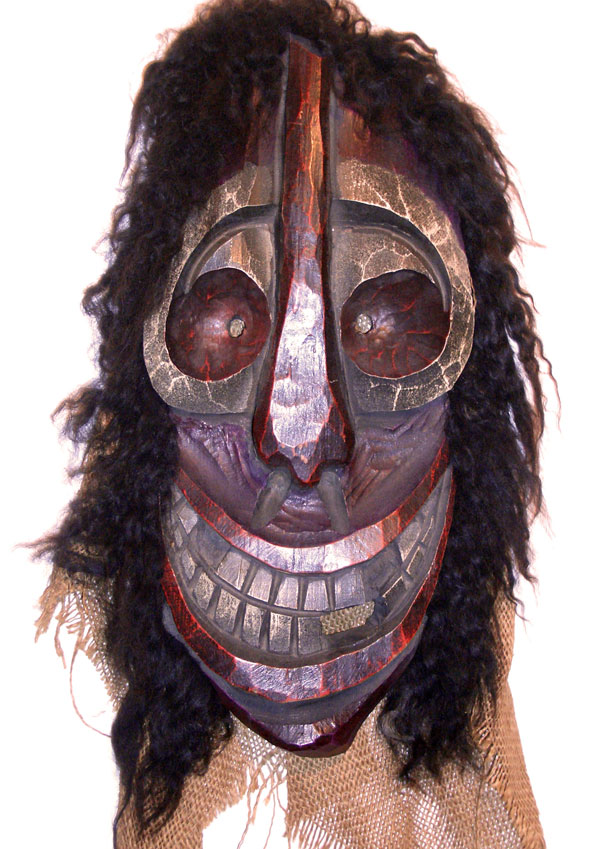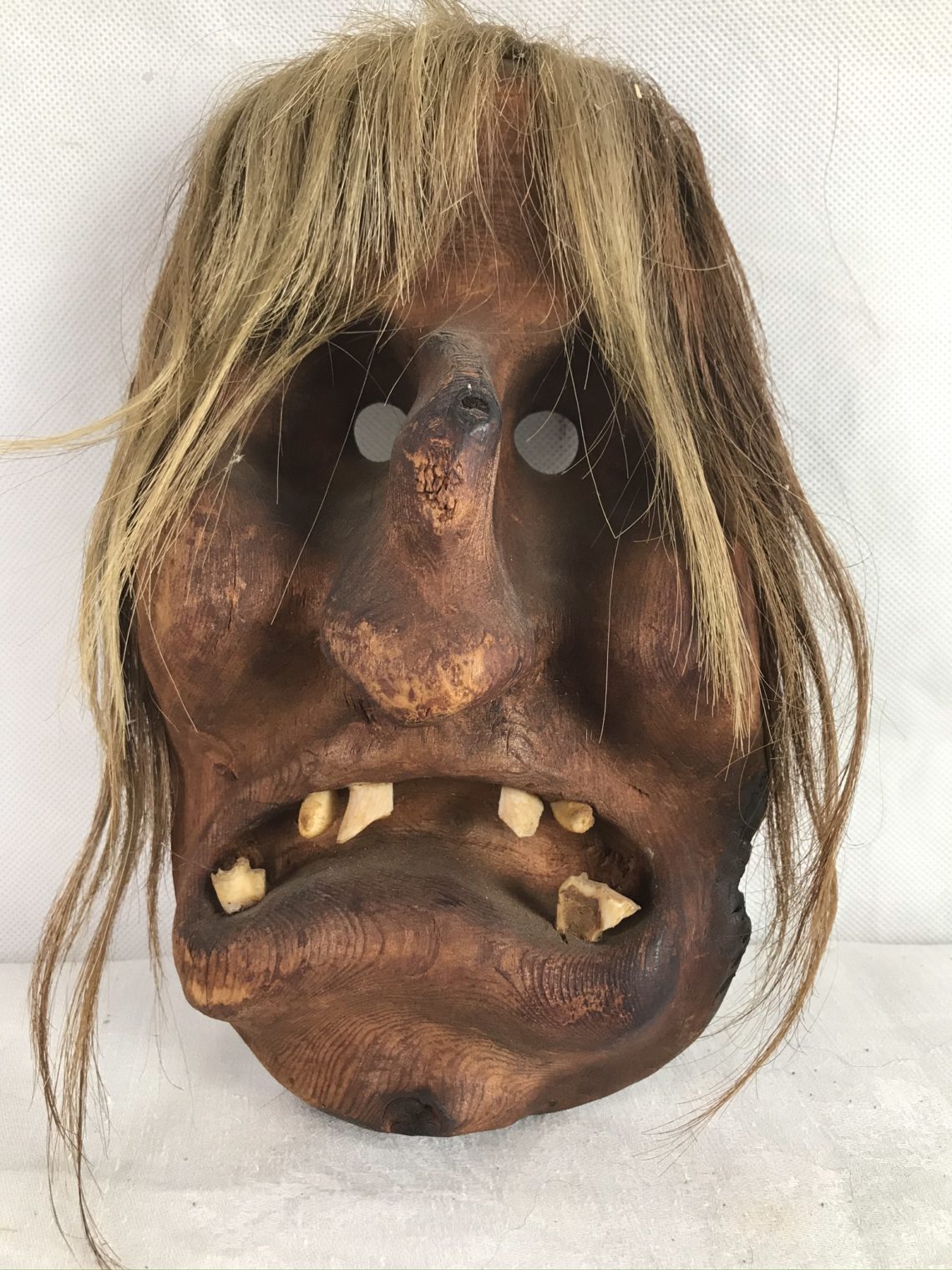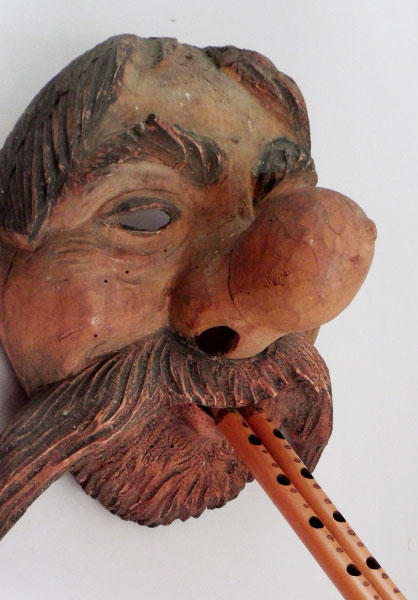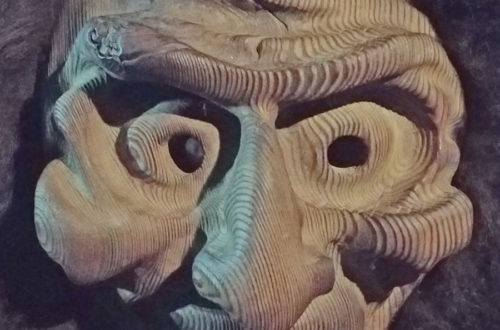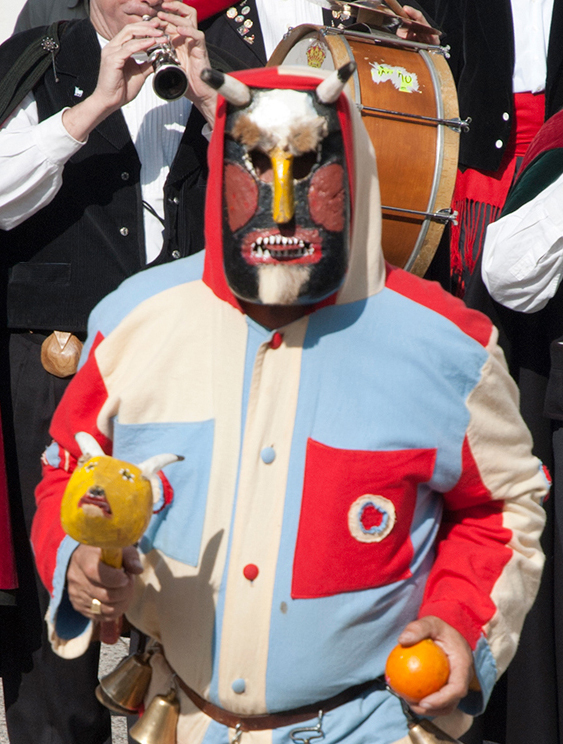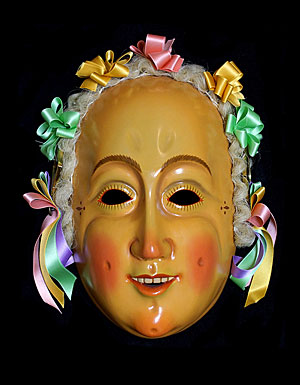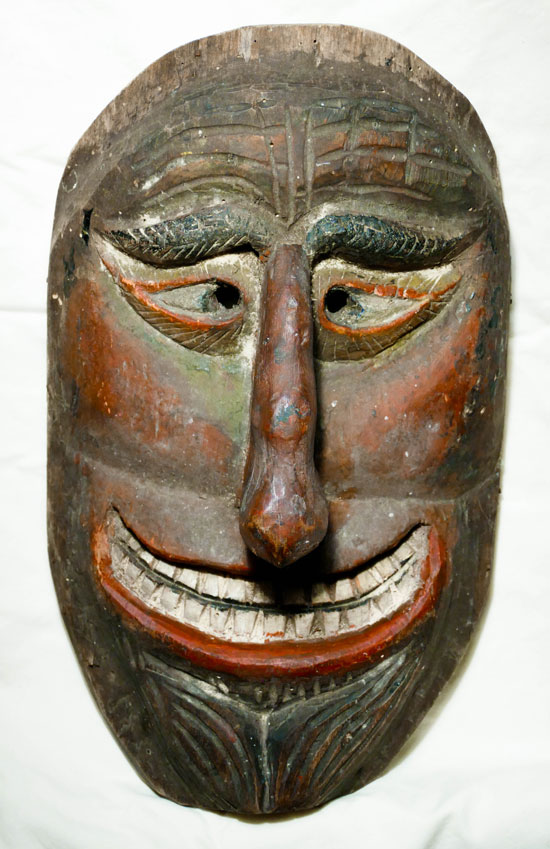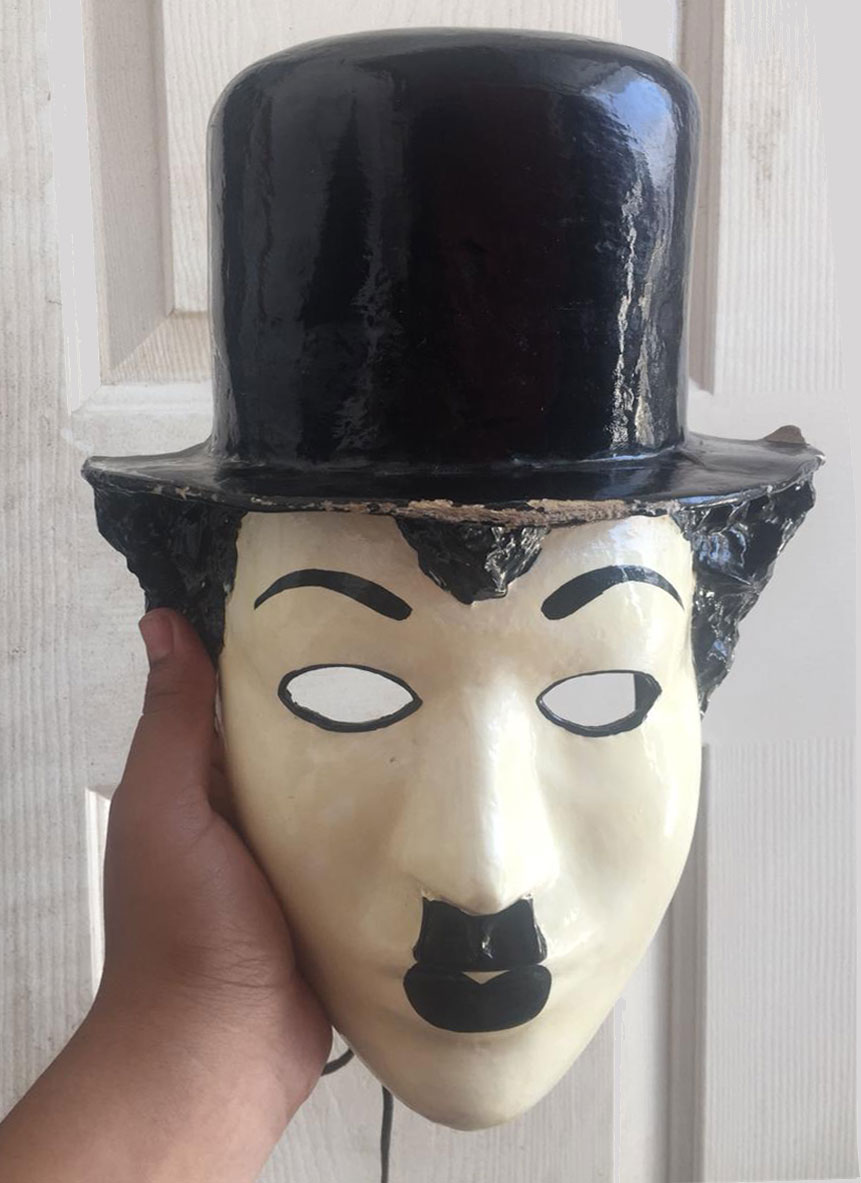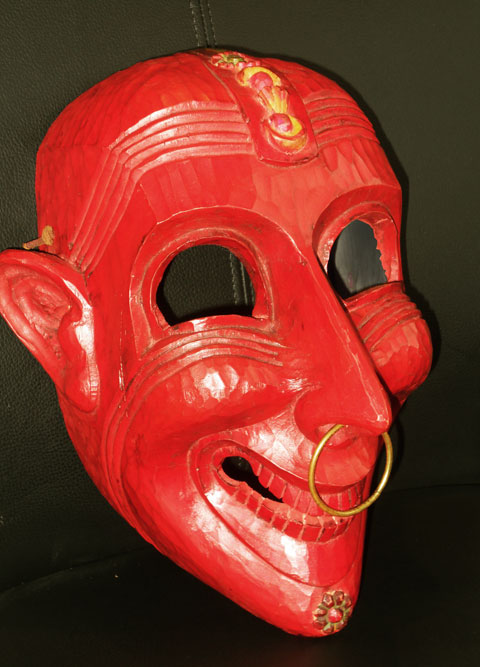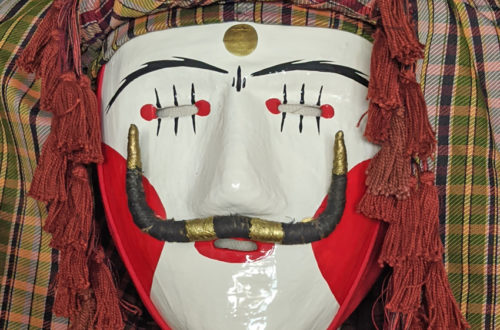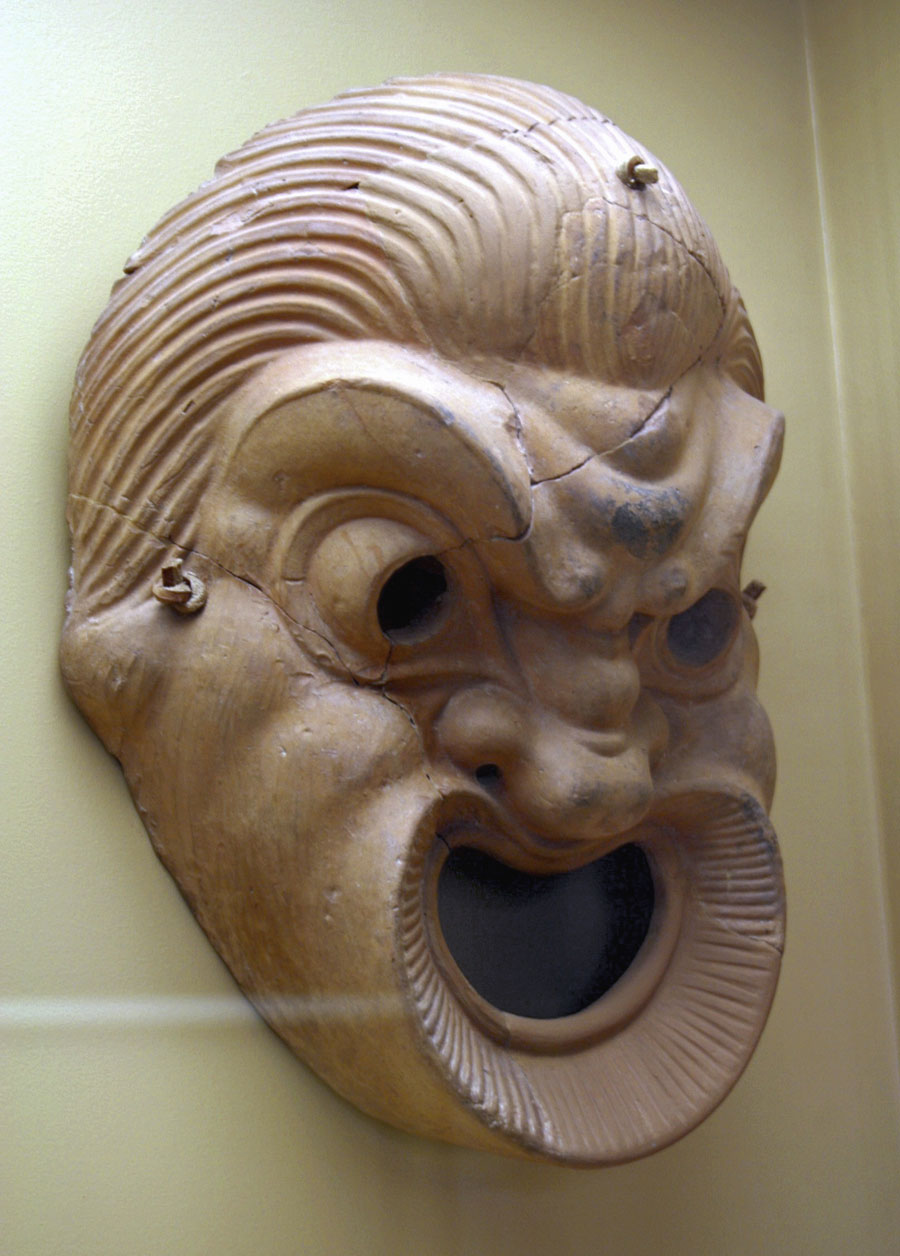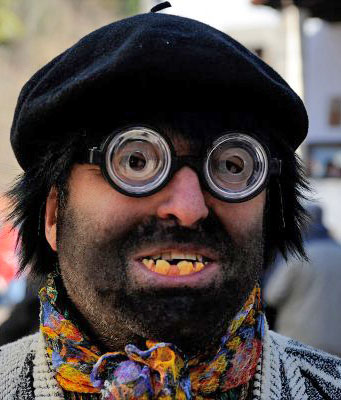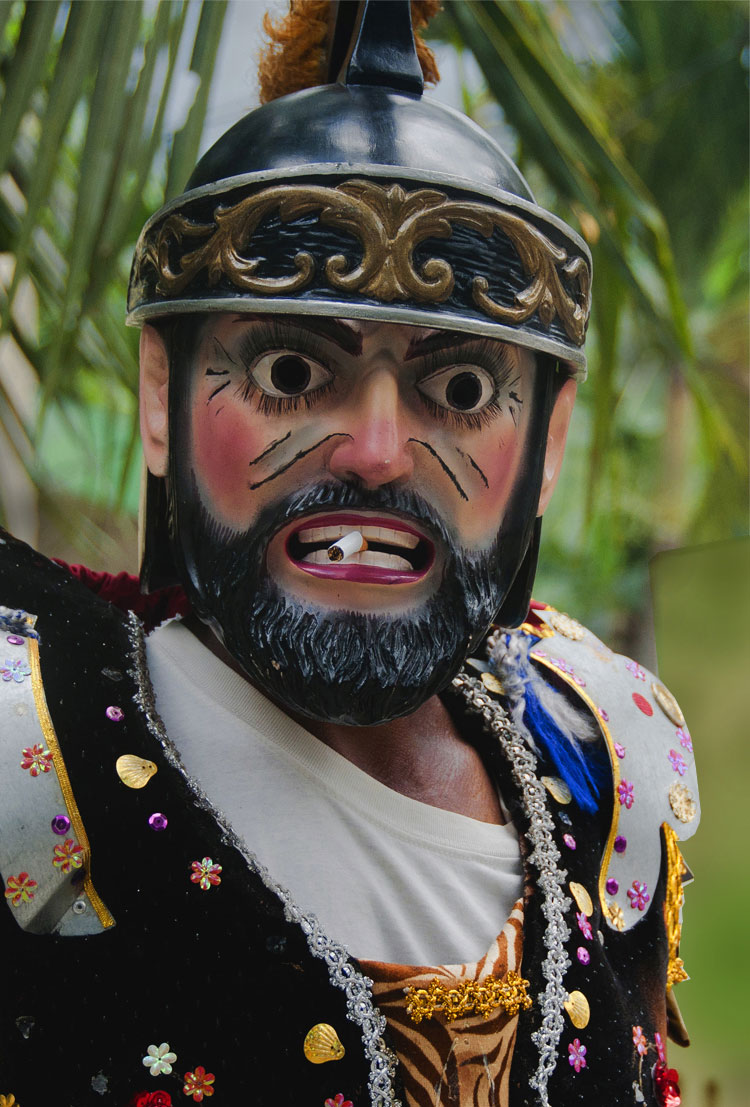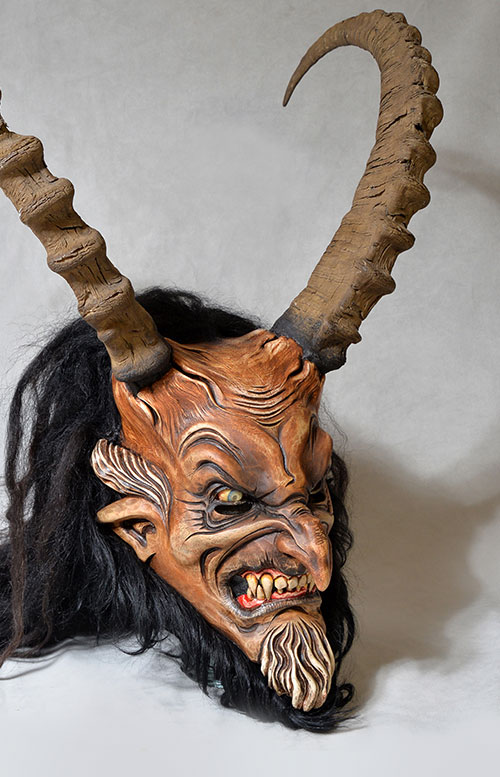The holiday season is synonymous with joy, warmth, and the spirit of giving. Yet, in the heart of Europe, nestled amid the snow-covered villages and twinkling lights, lurks a figure that shatters the serene facade of the holiday season. Meet Krampus, the yin to Santa Claus’s yang, and the harbinger of holiday chills and thrills. Krampus, with his sinister appearance and a penchant for punishing naughty children, is a folkloric creature primarily associated with Central European Christmas traditions. This half-goat, half-demon character sports twisted horns on his head, a long red tongue that lolls menacingly from his mouth, and cloven hooves that echo ominously through the streets. The Krampus legend…
-
-
European Theater Mask
Q: Any idea where this is from? I inherited it from an uncle who had it in the 1950’s. He was a frequent visitor to Paris and I suspect he bought it at the Flea Market there. It is 15″ tall to the top of the ears (which look like some kind of leather).
-
Chocalheiro mask from Portugal
This mask is part of the cultural heritage left by Celtic settlements in the north of Portugal (13th Century BC). Masks were a central part of pagan rituals at the time, representing demons, animals and valued human assets such as wisdom, happiness and experience. Chocalheiro masks are one of the most well known symbols, and the old pagan rituals brought by the Celts gave birth to the festivities that have been kept throughout the centuries in several villages in the north, with slight variations from place to place. They represents a pagan entity, which is neither good or evil. In fact, such descriptions were only introduced in the rituals when…
-
Court Jester Mask
From hundreds of years ago to today, this famous mask has been used in Europe and the Americas a lot. They can be made of leather, like this one– or plastic, papiermache, cardboard, etc., plus many different colors and designs. They have always been used in theater, carnivals, parties, holidays and celebrations. They can be found in all sorts of places at almost any price. Always fun to collect, you can gradually work your way up to an older, high-quality mask like ours. If you’re an oldster like me, you might need something to do during the pandemic. Bob, 1758
-
Contemporary Greek carnival masks
Q: I haven’t seen any photos of contemporary Greek masks in the site yet, so I thought I could share one to bring some attention to their great carnival tradition. In the attached picture you can see the main masks of the Boules carnival (Bride and Janissary) from Naoussa, in Greece. I had the opportunity to spend some time with an artisan family that have been making these masks and costumes for generations, and I learned how much tradition there is in every aspect of it (masks & costumes, performances, dancing, etc.). When I got these masks then, I even got the male one custom-fitted to my head! (the in-process…
-
Old European mask?
Q: I bought this mask as a “Perchtenmaske” on Ebay, but I think it´s not European. Its made of leather and the nose and the eyes are wooden. Maybe you can give me some information. Peter, 1663 A: After studying your photos I think you might have an old, used artifact that could be worth a lot of money. It certainly looks authentic. But where is it really from? Perchten is an ancient pagan festival meant to drive out the devils of winter in early December with a Perchtenlauf or parade of these devil like creatures through the center of Austrian villages. Yours also might be a type I have…
-
Tschaggatta mask from Swiss Alps
Q: This is a Native American mask. I would love your reaction/input. Dominikija, 1654 A: On February 8, 2019, a viewer submitted a similar mask that he found in an attic in North Carolina. It was roughly 10 inches tall (minus the hair) and 8 inches wide. It appeared to have real teeth. Take a look at #1515 in our archives. What I thought was a Cherokee Booger mask was actually a small, decorative Tschäggättä mask from Lotschental in the Swiss Alps. The Mask Man had gotten it wrong. Well, I’m not going to make that mistake again. Incidentally, you can easily learn more about this traditional European mask with…
-
Botarga mask from Spain
Different parts of Spain have their own unique ways of designing masks and costumes for celebration. I believe the botarga, a distinctive character associated with the traditional winter festivities in the region of Guadalajara, is the fifth blog I done on Spanish masks. They are all different. The botarga is a character connected to today’s religious celebrations. Its origins are thought to date from pre-Roman times and to be related with fertility rites. The mask’s typical accessories are the brightly colored costume, a truncheon, castanets and the cowbells tied around the waist. It is made of brightly painted walnut wood. The face resembles a devil, with an open mouth, pointed…
-
Old-style Charlie Chaplin mask
Q: Hi, I got this mask on a yard sale, I’ve never seen something like it, and am asking for an opinion. Ericka, 1577 A: At the age of 82, I have seen images of Charlie Chaplin hundreds of times. But for millennials he could be ancient history. Several years ago I posted a very similar mask. The copy said… Halloween Charlie Chaplin Mask. Dresden, Germany. Painted papier mache. Hand-painted and constructed of heavy papier mache, this mask probably was made for Fasching. Germans call the pre-Lenten Carnival Fasching or Fastnacht, Americans call it Marti Gras. Here is what Wikipedia says today… Sir Charles Spencer Chaplin (16 April 1889 –…
-
Strange masks from Basque country
Q: Hi, I am Basque from the Spanish Basque Country, do you know anything about Basque masks? We have some in our traditions. Fernando, 1563 A: I know nothing about Basque masks. So I looked around the internet and found these four crazy masks from the the appropriate region of Northern Spain. All four seem to be photographed at local carnivals. Perhaps you could do some research, and maybe one of our viewers will have something to contribute as well.
